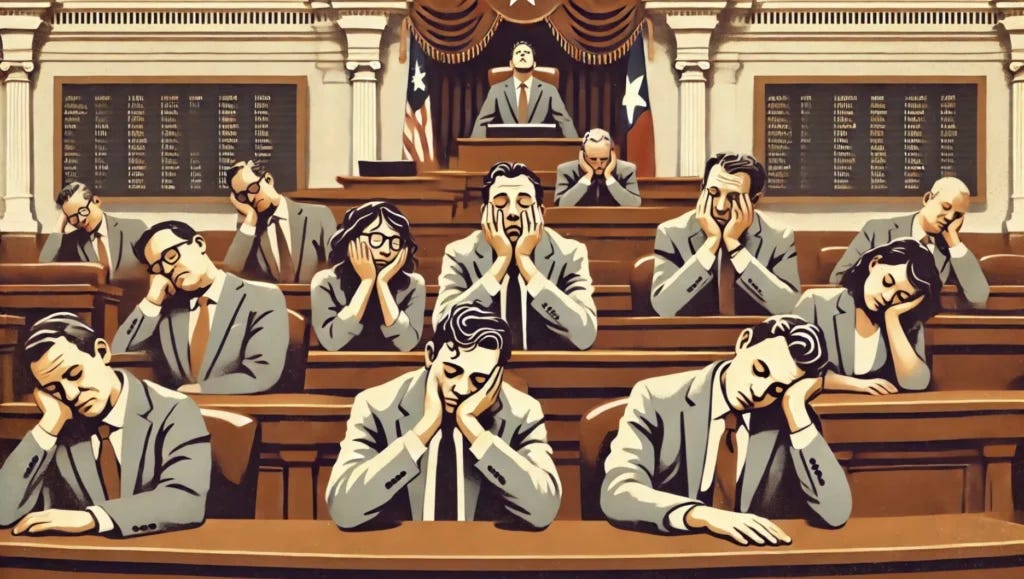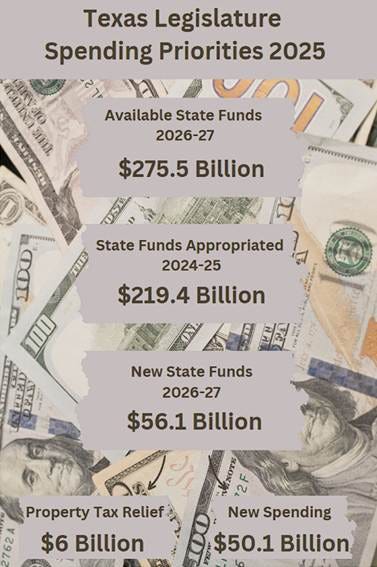Is the Texas Legislature Tiring of Property Tax 'Relief'?
'Relief' Gets More Expensive Because Legislators Will Not Control Runaway Spending
A sentiment making its way around the Texas Legislature is that providing tax relief for property owners is “too big of a commitment.” An element of this was expressed several times in a recent Senate Finance Committee hearing where members repeatedly noted the cost of paying for property tax relief this session, when accounting for relief passed 2019, 2021, and 2023, will be $51 billion.
In Galatians 6:9, the apostle Paul tells us, “And let us not grow weary of doing good, for in due season we will reap, if we do not give up.” To the extent that property tax relief has been a good thing, Texas policymakers should be encouraged and continue their work.
But what if the work of property tax relief has been something less than good? In that case, legislators may be getting weary from the effort of doing the same thing over and over again but achieving poor results. This is a very different thing.
This second scenario is the most likely the case for many Texas legislators. For example, in 2023, the Legislature spent an additional $18 billion on government schools over two years in an attempt to provide property tax relief, yet property taxes actually increased by $6 billion during that period. Similarly, while the state will spend $51 billion on government schools this biennium because of property tax relief efforts since 2019, property taxes have increased $23.6 billion over that same period. Something is not working.
Why? Because the Legislature has refused to rein in the runaway spending by local governments and school districts that is driving the runaway property taxes. While property owners are paying somewhat lower taxes than they would have otherwise paid, their taxes are still rapidly increasing. It is not only legislators who are getting weary.
The graphic above shows that the Legislature indeed seems to be wearing of property tax relief, committing much less money to it this session. Based on projections by Texas Comptroller Glenn Hegar in his Biennial Revenue Estimate released last month, the Texas Legislature will have $275.5 billion dollars in state revenue available for spending. Taking out the $219.4 billion the Legislature appropriated in 2023, state representatives and senators will have $56.1 billion in new money available for spending over what they spent in 2023.
Yet out of the $56.1 billion in new funds, the Texas Senate has proposed devoting only $6 billion to property tax relief; the Texas House only $6.5 billion. Which means that Texans only get back 11 percent of the new funds; 89 percent, or $50.1 billion, are available for new spending.
The best way to get over the weariness of property owners who pay property taxes and legislators who pay for property tax relief is to eliminate the property taxes. The first step toward making this happen is for legislators to stop spending growth by school districts and local governments. Next, the Texas Legislature should abolish school property taxes, which could be done in as little at 8 years. To accomplish this, legislators will have to tackle their largest hurdle—their propensity for spending as much of our money as they can get their hands on. Texans should not weary of helping their elected officials do this, even if it requires many trips to the Texas Capitol and to the voting booth.
A version of this article was originally published by Texans for Fiscal Responsibility.







How can the Texas House be tired of anything when their "Leader" has not even set a calendar? Their "Leader" is still waiting to hear from democrats about how they want him to promote democrat policies & not republican policies. If the House "Leader" ever brings a bill, it will be one that is what the democrats want & only supports republican values minimally.